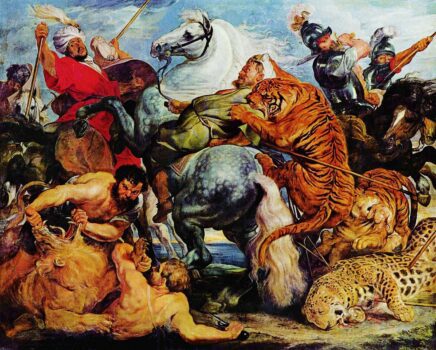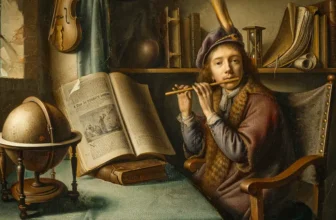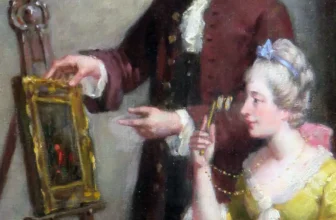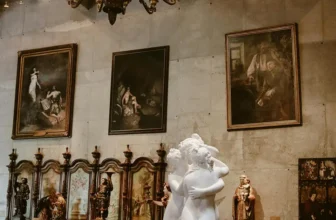Shopping Ads: Antique Oil Paintings On Canvas For Sale. Limited Originals Available 💰😊
Authentic hidden masterpieces, Explore old master antique oil paintings from the Renaissance and Baroque eras. From 15th-century to 18th-century Antique Paintings. Bring the Renaissance and Baroque in your home. Shop Now!
🎨 Antique Oil Paintings On Canvas Renaissance, Baroque Art Antique Oil Paintings, Make Offer 16th to 18th Century Portrait Paintings
The Story of The Tiger Hunt by Peter Paul Rubens
In the vast and ever-evolving landscape of Western art, few names command as much reverence as Peter Paul Rubens. A towering figure of the Baroque era, Rubens was not only a painter but also a diplomat, scholar, and master of allegorical storytelling. His works shimmer with motion, passion, and emotional gravity, portraying the human condition in the grand theatre of myth, history, and divine drama.
Among his many powerful compositions, The Tiger Hunt stands out as a visual explosion of chaos, energy, and primal struggle. It is not just a painting but a narrative in motion, a roaring snapshot of man versus beast, life versus death, civilization versus nature. But beyond the surface spectacle, what does this painting truly represent? What inspired Rubens to create such a dynamic tableau, and where can this piece be found today?
Who Painted The Tiger Hunt?
The Tiger Hunt was painted by Peter Paul Rubens, a Flemish Baroque painter born in 1577 in Siegen, in what is now Germany. Rubens rose to fame during the early 17th century, building a reputation for his lush, energetic canvases full of muscular figures, vivid color, and rich symbolism. He was an artist of immense productivity and influence, whose workshop in Antwerp turned out commissions for monarchs, churches, and wealthy patrons throughout Europe.
Rubens was deeply learned and multilingual, steeped in Classical knowledge, and well-traveled. His style was shaped by both the Italian Renaissance and the dynamic spiritual fervor of the Counter-Reformation. His brushwork, compositions, and psychological intensity made his paintings pulse with life.
In the 1610s and 1620s, Rubens turned increasingly toward large-scale, dramatic scenes, often populated with animals, horses, and violent action. The Tiger Hunt, painted around 1615–1616, falls into this phase. It is part of a broader hunting series that includes The Lion Hunt, The Hippopotamus and Crocodile Hunt, and The Wild Boar Hunt, all intended to showcase his technical mastery and convey themes of man’s struggle with nature.
What Is Happening in The Tiger Hunt?
At first glance, The Tiger Hunt may seem overwhelming. A riot of motion and color dominates the canvas, pulling the viewer into the heart of a brutal confrontation. The painting depicts a ferocious battle between men and tigers in a wild, almost apocalyptic landscape. The scene is chaotic, but not without order, Rubens masterfully guides the viewer’s eye through the spirals of action, using diagonals and swirling forms to evoke a sense of unstoppable movement.
In the center, a man on a rearing white horse struggles to fend off a tiger that has leapt onto the horse’s flanks. Another hunter is already on the ground, possibly wounded, his spear useless against the cat’s jaws. Around them, more men with turbans and spears engage in the fray, attempting to kill or fend off the tigers. Horses rear and thrash, tigers leap and claw. Every figure in the painting, human and animal alike, is caught in a desperate attempt to dominate or survive.
The setting is exotic and untamed, an imaginative wilderness rather than a realistic location. The inclusion of turbans and Middle Eastern attire in the figures suggests an orientalist fantasy more than an ethnographic record. This was typical for Rubens’ time, when distant lands were often portrayed as mysterious, dangerous, and barbaric.
Importantly, The Tiger Hunt is not meant to be a literal representation of a real hunting expedition. It is a symbolic drama, a mythic interpretation of humanity’s confrontation with raw, elemental nature. The composition brims with tension: man’s power against nature’s fury, courage against savagery, control against chaos.
What Is the Meaning Behind The Tiger Hunt?
Though it depicts a violent clash, The Tiger Hunt is not merely a glorification of bloodsport. Its meaning runs deeper and reflects Rubens’ broader interests in mythology, power, and human passion. The hunt scenes he painted were often allegories, embedded with political, spiritual, or philosophical implications.
One interpretation of The Tiger Hunt is that it represents the struggle between civilization and untamed nature. In the 17th century, as European powers expanded into new territories, ideas of conquest and control were prominent. The tiger, a creature not native to Europe, was a symbol of exotic danger and primal force. The hunters, by contrast, embody discipline, order, and the drive to master the unknown.
This reading aligns with Rubens’ own diplomatic experiences, he served as an emissary for the Spanish Netherlands and understood the tensions between authority and chaos, rule and rebellion. His hunts may reflect not just physical combat, but metaphors for political or spiritual conflict.
Another possible layer of meaning lies in the Baroque fascination with dramatic contrasts: light and dark, life and death, serenity and violence. The hunt is an ideal stage for this kind of emotional and physical drama. In The Tiger Hunt, the fury of the animals mirrors human emotions, rage, fear, heroism, desperation. It becomes a kind of moral theater.
Some scholars also suggest that the hunts were visual celebrations of princely power. Rubens often worked for royal patrons who saw themselves as heroic figures subduing wild forces. These paintings could thus serve to glorify their rule and prowess, likening their authority to the brave hunters battling beasts.
What Type of Art Is The Tiger Hunt?
The Tiger Hunt belongs to the Baroque style of painting, a movement that flourished in Europe during the 17th century. Baroque art is characterized by its emotional intensity, grandeur, movement, and theatricality. It often uses dramatic lighting, dynamic compositions, and rich color palettes to draw viewers into complex scenes.
Rubens was a central figure in Baroque art and arguably its greatest painter in the North. His work blends the muscular idealism of Michelangelo with the coloristic brilliance of Titian. But where Renaissance art emphasized balance and clarity, Baroque art reveled in drama and excess, and The Tiger Hunt is a quintessential example.
This painting is also an example of history painting, considered the highest genre in the hierarchy of Western art at the time. History painting didn’t just refer to historical events but also included allegories, mythologies, and religious stories. In this context, The Tiger Hunt can be seen as a kind of invented mythology, a stage for exploring timeless human themes.
Additionally, it fits within the animalier tradition, a genre devoted to animals, especially in action. Rubens’ tigers are particularly notable for their anatomical realism and expressive power. He studied live animals and dissected corpses to understand their musculature and behavior, and it shows in the way the tigers leap and snarl with terrifying vitality.
Where Is The Tiger Hunt Painting Today?
Today, The Tiger Hunt resides in the Musée des Beaux-Arts in Rennes, France. It entered the museum’s collection in the early 19th century, during a period when many major works of art were redistributed across Europe following the upheavals of the Napoleonic wars.
The painting remains one of the museum’s highlights, a vivid testament to Rubens’ genius and a rare glimpse into the imaginative might of Baroque art. It is not as widely known as some of Rubens’ religious or mythological masterpieces, but to art historians and lovers of dramatic storytelling, it is a treasure.
In person, the painting is overwhelming in scale and intensity. Its size, more than 8 feet wide, envelops the viewer, just as Rubens intended. He wanted his paintings to be immersive, pulling the viewer into the scene emotionally and psychologically. Standing before The Tiger Hunt, one feels the terror of the hunters, the ferocity of the beasts, and the sheer unstoppable energy of nature.
The Legacy of The Tiger Hunt
In the centuries since it was painted, The Tiger Hunt has continued to fascinate and challenge viewers. It has inspired countless interpretations and echoes in later art, from Romantic wild animal scenes to modern depictions of the human-animal divide.
It also invites important contemporary questions: What does it mean to “conquer” nature? What are the costs of asserting dominance over the wild? How do depictions of the “other”, in this case, both exotic animals and non-European figures, reflect the ideologies of the time?
For modern audiences, the painting may provoke discomfort as well as admiration. Its themes of violence, conquest, and control resonate differently in a world increasingly aware of ecological fragility and the ethics of hunting. But this is precisely the power of great art: it compels us to confront uncomfortable truths and to see ourselves, our fears, hopes, and histories, in a new light.
Peter Paul Rubens’ The Tiger Hunt is more than a vivid portrayal of a violent event. It is a work of epic imagination, technical brilliance, and symbolic depth. Painted during a time when Europe grappled with expanding frontiers, political tensions, and religious upheaval, it channels those energies into a single explosive image.
Today, housed in Rennes, the painting continues to roar with vitality. It challenges us to look past the surface spectacle and into the heart of what it means to struggle, to master, and to survive. It is a baroque masterpiece that, like the tigers it depicts, refuses to be tamed.




